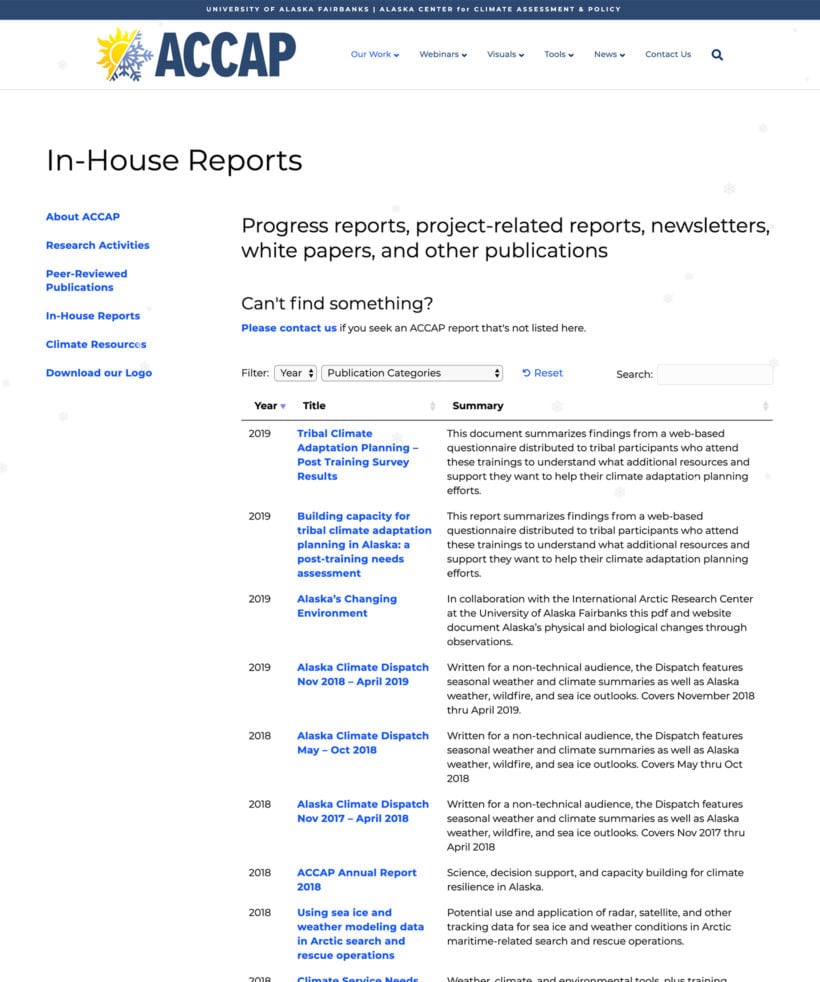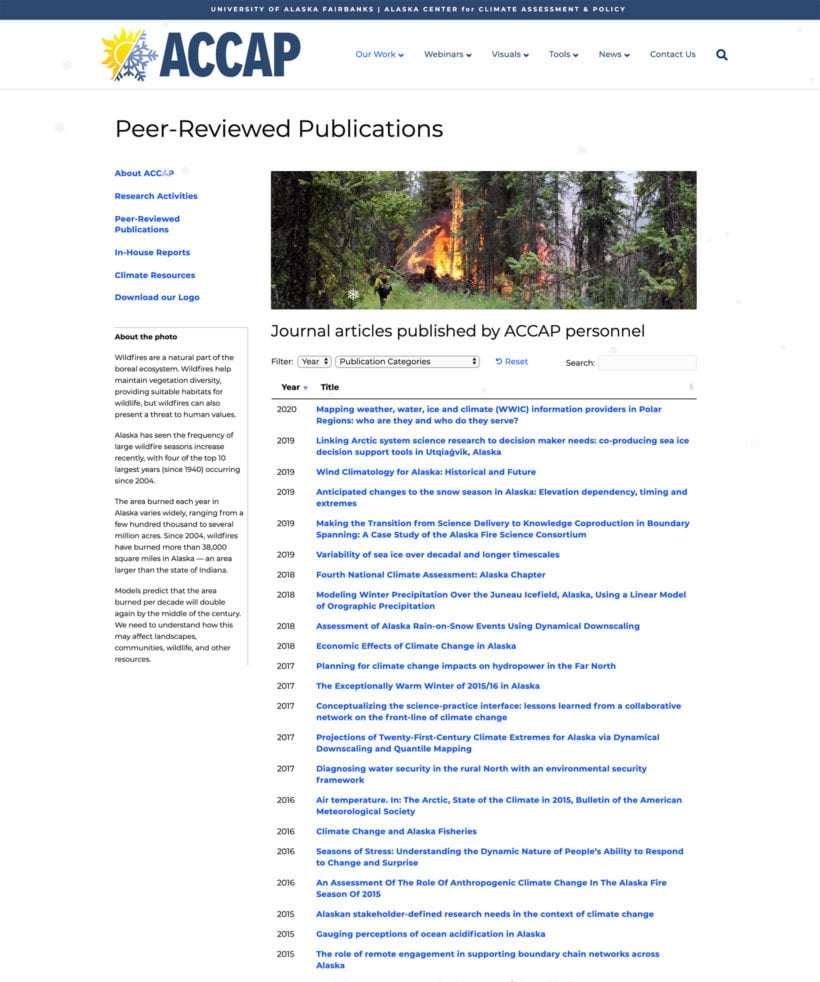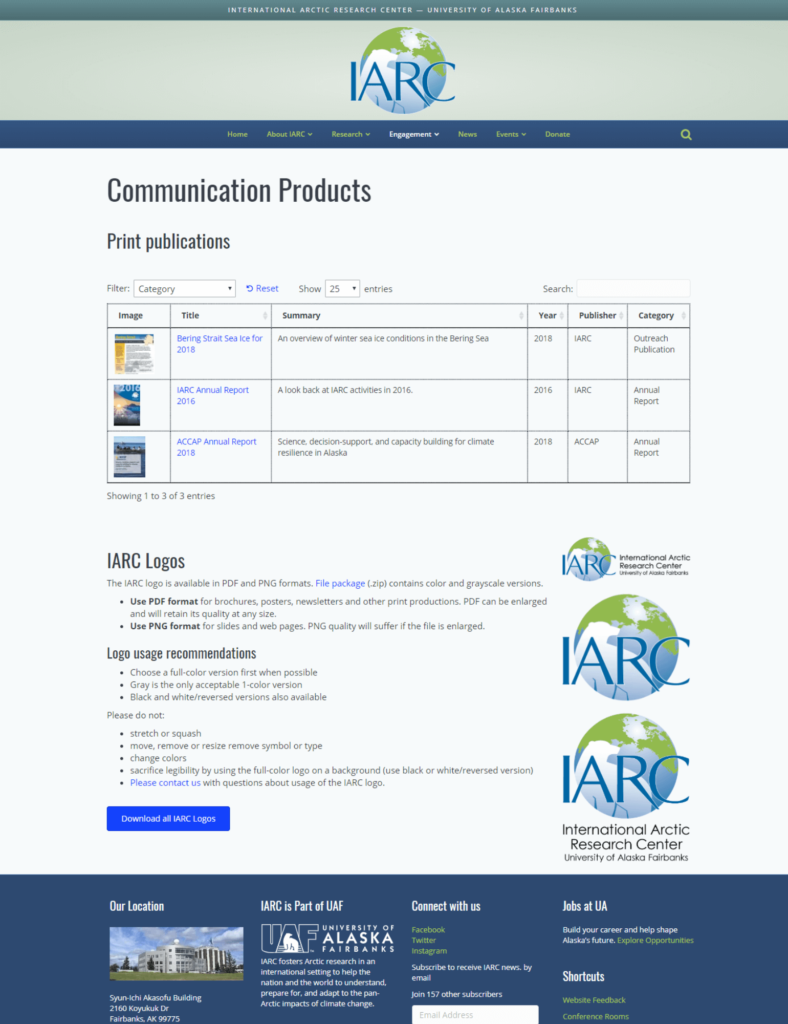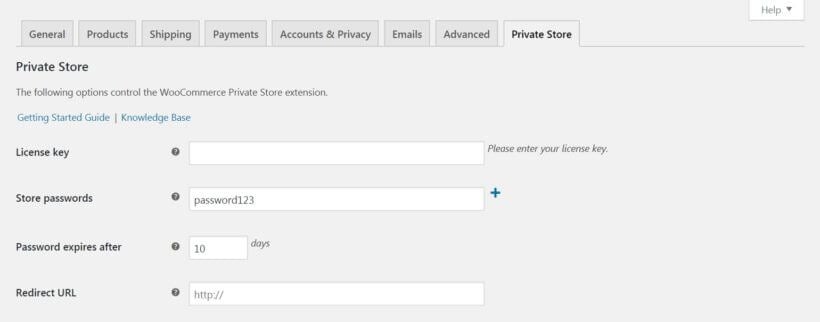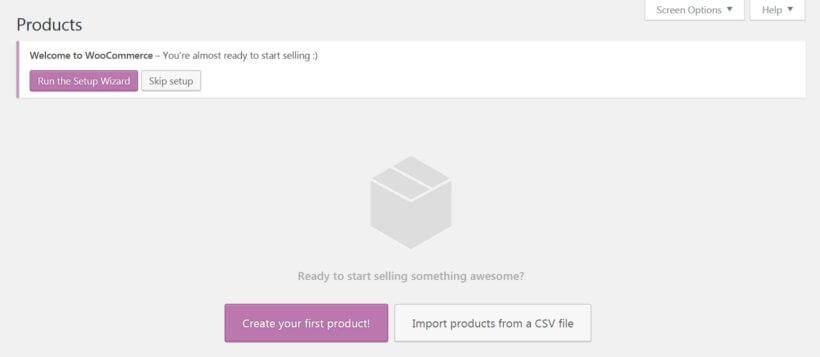
A document library plugin is a perfect solution for WordPress website owners that need an easy way to share documents with others. It lets you organize document libraries in a logical way and make them available to people all around the world.
With a document library plugin, you can simplify document library management and also create an easy-to-use resource hub or publications database for your organization or institute.
Here’s a gallery of different document libraries created using Barn2’s Document Library Pro plugin on the International Arctic Research Center website:
The University of Alaska Fairbanks’ International Arctic Research Center (IARC) was founded back in 1999 to support Arctic research.
The purpose of the website is to act as a community hub for just about anyone who’s interested in the Arctic climate, including researchers and students. It also provides easily accessible information (including peer-reviewed publications, print publications, and in-house reports) to those interested.
Let’s take a look at the problem IARC faced initially and how Document Library Pro was the right solution for them.
The problem
In the beginning, IARC created a simple list of publications to publish on their WordPress website. However, as their number of publications continued to grow, IARC quickly realized they needed a better way to display documents. This, of course, was challenging considering they needed the list of documents to be dynamic, filterable, and sortable.
Carolyn Rosner, designer and web developer at IARC, says:
“We needed a way to display a list of documents that would be filterable, and sortable, and not just a static list because we knew that list would grow.”
Above all, IARC was looking for a way to create searchable, sortable, and filterable document libraries on their WordPress website. This would help their team, external researchers, and students easily find the document or publication they’re looking for.
Essentially, it would make it easy to search for a specific document, sort them by title, year of publication, or publisher, or filter by category. In addition to this, they could display dozens of documents in a table layout instead of creating a long list of publications using static lists.
The solution
Using Barn2’s Document Library Pro plugin, IARC was able to store their communications, including annual reports and published articles, in a searchable, sortable, and filterable table layout.
According to Rosner, IARC uses Document Library Pro for:
“... tables of documents, peer-reviewed publications, research projects (with metadata such as personnel, contact information, etc.) as well as tables of other resource types such as case studies.”
More specifically, IARC uses the Document Library Pro plugin to create the following document libraries:
- A publications database that lists communication products.
- Listing in-house reports and case studies.
- A searchable list of peer-reviewed academic publications.
- A document library outlining research activities along with a status.
Since the Document Library Pro plugin is incredibly flexible, IARC can use it to create document libraries with different metadata.
Tutorial: Here’s an in-depth, step-by-step guide to creating your own document libraries.
For example, the peer-reviewed document library contains the publishing year and title of each publication. The case studies document library, on the other hand, contains an image, title, and summary of each document. This gives IARC the flexibility to include the document information they want to showcase in each document library, instead of following a template.
How IARC created document libraries using Document Library Pro
The specific implementation IARC uses to create their document libraries is pretty standard.
In the case of in-house publications, they link to a downloadable PDF document. Similarly, a slightly different implementation involves listing case studies in a table layout. IARC also links to documents published on their sub-groups’ websites.

They also use the Document Library Pro plugin to display other types of information too. For example, they display related materials directly in the document library. These include links to other websites and additional documents.
Finally, to create different-looking document libraries on the same website, IARC used the document library plugin’s shortcodes to specify parameters for columns.
As Rosner puts it:
“[Implementing the plugin] was quite easy. And [the Barn2 Plugins] website is excellent in terms of organization, clear instructions, and links to related materials. I refer to it a lot.”
“We can display long lists of items that can be searched or filtered by category. This is not possible with static lists.”
Using the document library plugin, IARC could easily display lists of sortable and filterable publications in a table layout. It also adds a search bar to the document libraries. Hence, this allowed them to tackle the challenge of displaying an ever-growing list of documents in a sortable way head-on.
IARC’s implementation of different types of document libraries on their WordPress website has made it significantly easier (and intuitive) for researchers and students to quickly find the exact document or publication they’re looking for. In this way, it improves the user experience their website delivers.
Create your own document libraries!
To recap, IARC solved the main challenge they faced to display a list of documents in a sortable and filterable way using Barn2’s Document Library Pro plugin. This makes it easy to create document libraries on your WordPress website with search, sort, and filter columns. It’s also great for listing all sorts of documents including publications, case studies, and reports.
Here’s what you need to do to organize your own documents using Document Library Pro:
- Install the plugin.
- Add or import your documents to WordPress.
- Use the plugin options to customize how your document libraries are displayed.
So, are you ready to create your own document libraries? Get Document Library Pro today!









